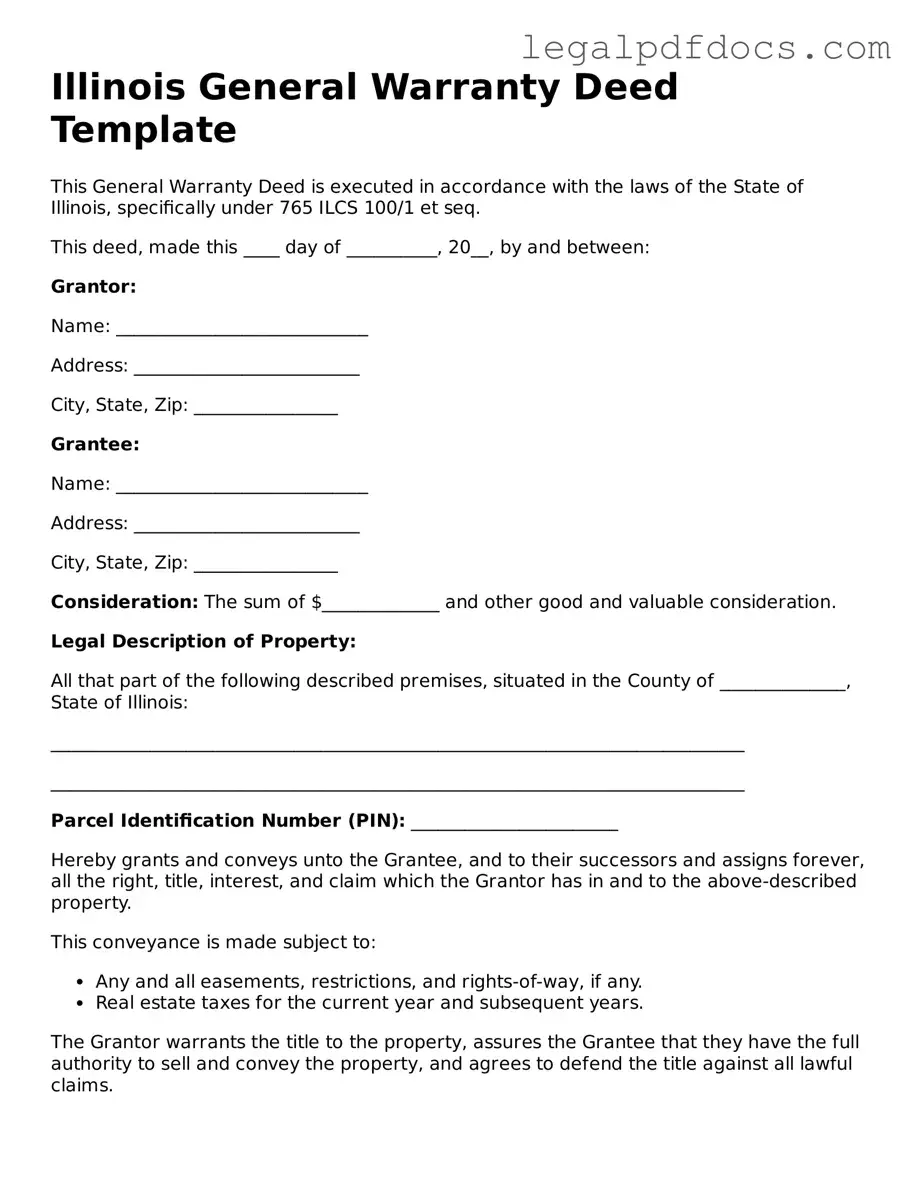Official Deed Form for Illinois
The Illinois Deed form is a legal document used to transfer ownership of real estate from one party to another. This form is essential for ensuring that property transactions are conducted smoothly and in accordance with state laws. Understanding its components can help facilitate a successful transfer of property rights.
Ready to take the next step in your property transaction? Fill out the Illinois Deed form by clicking the button below.
Open Deed Editor Here
